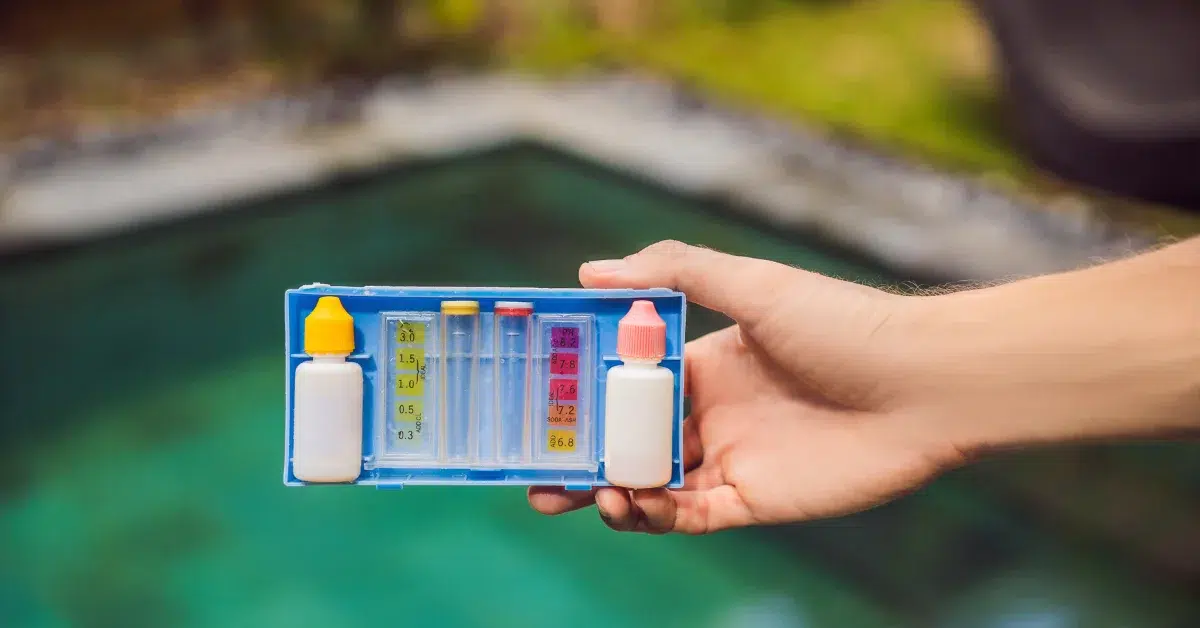Pool Water Alkalinity: What It Is and Why It Matters
Pool water alkalinity is a critical factor in maintaining a healthy and safe swimming environment. Learn what alkalinity is, why it matters, and how to maintain the perfect balance for your pool.
Secrets of Water Alkalinity in Pool
Imagine plunging into a crystal-clear pool, sunlight dancing on its surface. Ah, the promise of summery refreshment! But beneath that sparkling facade lies a hidden realm where the forces of acidity and alkalinity wage a silent battle.
As guardians of this realm, we must understand the power of pool water alkalinity, which holds the key to sparkling and happy swimmers.
What is Alkalinity and Why is it Important?
Alkalinity measures how well your pool water can resist changes in pH, which is the level of acidity or alkalinity in the water. Having the right alkalinity level is essential for keeping your pool water clear, comfortable, and safe for swimming.
How to Test and Adjust Alkalinity Levels
You can test the level using a pool test kit or strips. The ideal alkalinity level for your pool is between 80 and 120 parts per million (ppm).
How to Raise Alkalinity
With low alkalinity, your pH can fluctuate greatly, making your water corrosive and irritating your skin and eyes. You can raise it by adding baking soda to your pool. You should always follow the instructions on the product label and adjust the alkalinity gradually, testing the water after each addition.
How to Lower Alkalinity
With high alkalinity, your pH can also become too high, making your water cloudy and scaling your pool surfaces and equipment. You can lower your it by adding muriatic acid or sodium bisulfate to your pool. You should always follow the instructions on the product label and adjust it gradually, testing the water after each addition.

What happens if Pool Water Alkalinity is low or high
If alkalinity is too low:
- It can cause the pH to fluctuate, making the water corrosive and irritating your skin and eyes.
- It can also damage your pool equipment, stain your pool surfaces, and reduce the effectiveness of your sanitizers.
If it is too high:
- It can cause the pH to become too high, making the water cloudy and scaling your pool surfaces and equipment.
- It can also make swimming uncomfortable for you and your guests.
You can use a pool test kit or strips to test and adjust your pool water alkalinity. You can raise your alkalinity by adding baking soda to your pool and lower it by adding muriatic acid or sodium bisulfate. You should always follow the instructions on the product label and adjust the alkalinity gradually, testing the water after each addition.

The Goldilocks Zone of Pool Paradise:
Like Goldilocks’ porridge, pool water craves the perfect balance – not too acidic or alkaline. This “Goldilocks Zone” lies 7.2 and 7.8 on the pH scale. In this sweet spot, chlorine efficiently sanitizes the water, swimmers enjoy comfortable dips, and pool equipment stays protected. Stray outside this zone, and trouble brews:
- Acidic water (pH below 7.2): Skin and eyes get irritated, chlorine becomes ineffective, and metal equipment corrodes. Imagine the horror of a rusty ladder mid-dive!
- irritated skin due to acidic pool water
- Alkaline water (pH above 7.8): Cloudy water, scale buildup, and slippery surfaces become unwelcome guests. Think murky depths and treacherous footing – not exactly the recipe for aquatic bliss!
Pool Water ph Level Chart
[wps_table style=”default”]
| Alkalinity Level | Effects | Products |
|---|---|---|
| 80-120 ppm | Ideal range for pool water | None |
| Below 80 ppm | Low alkalinity can cause pH to fluctuate, water to become corrosive, and chlorine to lose effectiveness | Baking soda, sodium bicarbonate |
| Above 120 ppm | High alkalinity can cause pH to rise, water to become cloudy, and scale to form on pool surfaces and equipment | Muriatic acid, sodium bisulfate |
[/wps_table]
Alkalinity: The Buffering Hero:
Enter alkalinity, our valiant shield against pH fluctuations. Like a stalwart knight, it absorbs excess acidity, preventing pH from dipping into the danger zones. Think of it as a chemical sponge, soaking up unwanted acids before they can wreak havoc.
But just like a knight too zealous, high alkalinity can be its own downfall. It can cloud the water, irritate the skin, and damage pool surfaces. Finding the balance is critical!
Find the ideal pool chemicals that cater to sensitive skin, insights, and recommendations in this insightful article on HotTubPatio.com.
Maintaining the Perfect Potion:
So, how do we ensure our pool water stays in the Goldilocks Zone? Regular testing is our magic spell! Aim for a total alkalinity (TA) range of 100-150 ppm. If your TA is:
- Low: Sprinkle in some sodium bicarbonate (baking soda!). This gentle knight nudges TA back towards the sweet spot.
- High: A partial water change is often the most effective solution. Think of it as a refresh button for your pool’s chemistry.
Explore More
Final Thoughts
Pool water alkalinity is critical to maintaining a healthy and safe swimming environment. By understanding the role of alkalinity and how to maintain the proper balance, you can ensure that your pool is a sparkling oasis for swimmers of all ages.
If you have any questions about alkalinity, consult a qualified pool professional. They can help you test your water and determine the best action to keep your pool water in tip-top shape.
Regularly checking pH and chlorine levels, especially before the day’s first swim, is essential to ensure consistent water quality. For an in-depth guide on maintaining pristine pool water, refer to this informative article from BetterHealth.Vic.gov.au.
Common Queries:
[wps_faq style=”classic” question=”How do I test my pool water alkalinity?”]You can test it using a pool water test kit.[/wps_faq]
[wps_faq style=”classic” question=”How do you raise total alkalinity in a pool?”]Add sodium bicarbonate (baking soda) or sodium carbonate (soda ash) to raise total alkalinity in a pool. Use a pool chemical test kit to check the level after adding the chemical. Be sure to mix the substances thoroughly in the pool water before swimming.[/wps_faq]
[wps_faq style=”classic” question=”What causes low alkalinity in the pool?”]Low alkalinity in the pool can cause pH to fluctuate, scale build-up, and corrosion. Causes of low alkalinity include evaporation, dilution, and acid rain.[/wps_faq]
[wps_faq style=”classic” question=”Pool water alkalinity calculator:”]To raise the alkalinity of pool water, measure the pH, multiply by 2.8, and add baking soda if the alkalinity is below 80 ppm. Retest the pH and alkalinity after adding baking soda. Repeat steps 2-3 until the alkalinity is in the desired range.[/wps_faq]













2 Comments